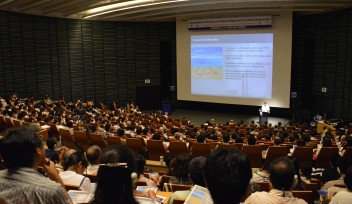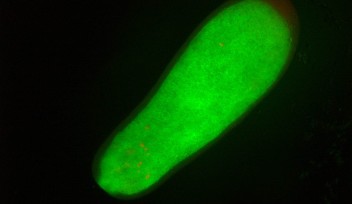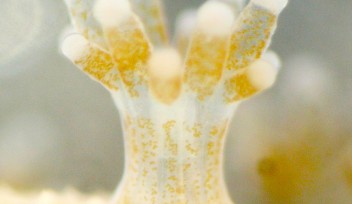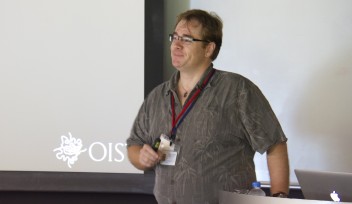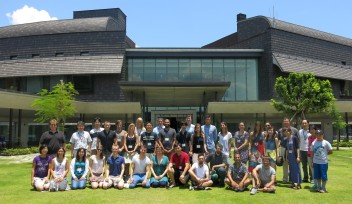mgu FY2012 Annual Report 3.2 fig3

Figure 3. Genomic Organization of Two Hemichordate Hox Clusters and Hypothetical Reconstructions of Hox Cluster of Ambulacrarian Ancestor. Summary of Hox clusters of extant two hemichordates and one echinoderm (Ambulacraria) and two hypothetical reconstructions of the cluster of the ambulacrarian ancestor, arranged in a phylogenetic tree [1]. Hox gene location and transcriptional orientation are indicated by triangles, the colors of which represent the different categories of Hox genes: anterior (purple), group3 (yellow), central (green), and posterior (red). The mir10 locus is indicated by name, between hox4 and hox5. Note the identical organization of the five gene segment (hox6, hox7, hox8, hox9/10, hox11/13a) of the echinoderm (S. purpuratus, sea urchin) and hemichordate clusters (bounded by dashed lines). In the hypothetical cluster 1 (upper left), the minimal ancestral cluster is proposed to be the same as the extant hemichordate clusters, including the inverted hox11/13b,c pair of genes, Then, within the lineage to sea urchins, the cluster underwent rearrangements and gene loss (hox4) as well as an inversion and translocation of hox11/13c. In the hypothetical cluster 2 (lower left), the minimal ancestral cluster is proposed to be like that of hemichordates except that hox11/13b and hox11/13c are in tandem with the other genes, not inverted as a pair. Then within the echinoderm lineage, the cluster underwent rearrangements of hox1–5 and gene loss (hox4), as well as an inversion, but not translocation of hox11/13b, whereas hox11/13b and hox11/13c inverted as a pair in the hemichordate lineage. The proposal of the kinds of hox genes in the ancestral cluster is supported by the hox sequence repertoire across extant Ambulacraria. Whereas hox1–9 (called 9/10 in Ambulacraria) are orthologous to chordate genes 1–9, the ambulacrarian posterior genes 11/13a,b,c differ from vertebrate genes 11–13 and are identified here as AmbPa,b,c to indicate their ambulacrarian-specific ancestry.
Copyright OIST (Okinawa Institute of Science and Technology Graduate University, 沖縄科学技術大学院大学). Creative Commons Attribution 4.0 International License (CC BY 4.0).










